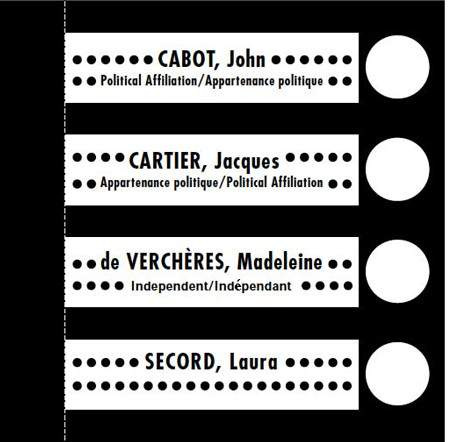After a month employed by Elections Canada, a lot of things stick in my mind. One of them is the belief by more than few people that somehow their ballots will be tampered with.
This invariably happened when I said “Here is your folded ballot. Mark the circle beside your chosen candidate, refold it, and bring it back to me. There is a pencil behind the voting screen over there.”
To which I would get “Do I have to use a pencil?”
The answer, in Canada, was: use a pencil, use a pen, use a Sharpie marker, use a crayon. We don’t care, as long as it’s clear who you’re voting for.
The belief by these people - thank you right-wing social media - was that someone, somehow, was going to erase their X and move it somewhere else.
Or, if they had actually thought hard for a minute, that someone was going to do this to hundreds or thousands of ballots. Because usually that’s how big the lead is in any given riding.
So, on election night here’s what happens to that piece of paper that you marked:
In a room of say thirty or forty people
Including representatives of candidates
Pairs of poll workers - who almost certainly hadn’t met before that day
Tear open the top of the ballot box
Dump out the ballots onto a table (anywhere up to 500 in one box, though more likely 100 to 200)
Sort them into piles so they all face the same direction
Then one by one each ballot is held up, examined by two or more people, and it’s marked down which candidate it was for
(or spoiled if you can’t tell.)
When the poll workers, and any candidate reps, agree that the count is right, the ballots are wrapped up, and the numbers are phoned into the local riding office, where they get entered into the Elections Canada database.
The opportunity to erase Xs and change them is, essentially, zero.
Plus, these people have been working for fourteen hours or more, and just desperately want to pack up, get out, and go get some dinner.
So no, no-one is erasing and changing ballots.
But, you ask, what I voted early?
Exactly the same, but with six more steps:
Your ballot (whether it had a list of candidates, or you had to write in the name) :
Is folded in half
Placed and sealed inside a blank Inner Envelope (the IE to Elections Canada)
Which is then placed inside a sealed Outer Envelope (OE, either Local or National, meaning not local) which you sign and date.
Those hundreds of signed and dated Outer Envelopes are checked off against a list of voters who have come in early and have voted.
All of these are locked up securely until Election Day.
On election day:
In a room of say thirty or forty people
Including representatives of candidates
Pairs of poll workers - who almost certainly hadn’t met before that day
Tear open the top of the ballot box
Dump out the envelopes onto a table (anywhere up to 500 in one box, though more likely 100 to 200)
Sort them into piles so they all face the same direction
Open each Outer Envelope, one by one.
Pull out each Inner Envelope, and separate them from the signed Outer Envelopes.
Open each Inner Envelope, and extract the ballot inside.
Sort them into piles so they all face the same direction
Then one by one each ballot is held up, examined by two or more people, and it’s marked down which candidate it was for
(or spoiled if you can’t tell.)
The opportunity to erase Xs and change them is, again, essentially zero.
Finally, if you’re still skeptical, all the ballots are packed up, sealed, and shipped to Ottawa, where they’ll be stored for TEN YEARS.
Just in case.





